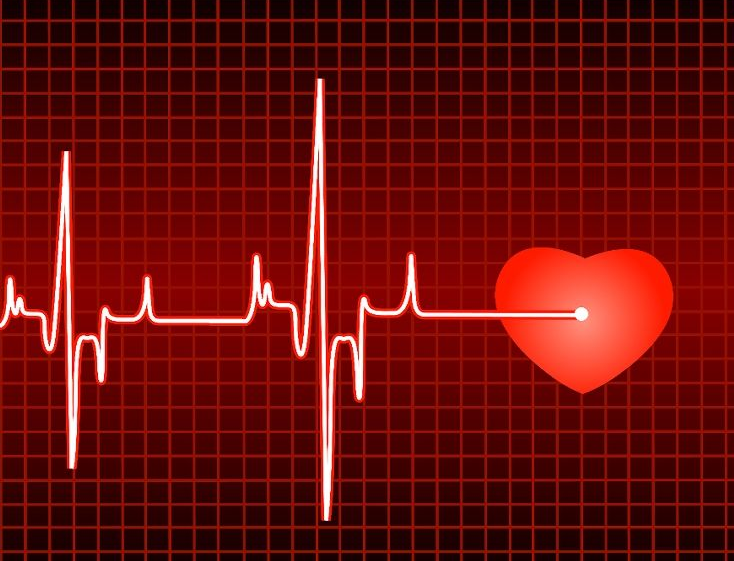But you also know that if that's what's making noise,
那么大家可能要想,如果这时三尖瓣和二尖瓣关闭
you can kind of guess-- and it's a very smart guess--that
你可能想到,也很容易想到
at the same time, the pulmonic valve and the aortic valve just opened.
肺动脉瓣和主动脉瓣会打开
So if the other valves snap shut, these just opened. Right?
如果这两个瓣膜关闭,剩下两个就会打开
You can kind of assume that, although the noise you're hearing is actually from here.
大家可以想一下,大家听到的心跳声是瓣膜关闭的声音
So what's happening with dub? Well, the opposite.
这个“哒”的情况就跟第一声相反
And what I mean by that is--let me now show you what happens a moment later.
相反的意思就是,我马上给大家介绍
Well, after the ventricles are done squeezing,
心室把血液压入血管之后
then we get to a point where you might have a little bit of flow that way and that way, just as I drew before.
这时血液可能会有这样的流动,跟之前画的一样的

And these valves snap shut as well. So now these snap shut.
这时瓣膜还是要关闭
And as these snap shut-- because they don't want to allow backflow, right?
这两个瓣膜关闭是为了防止血液回流
They're going to snap shut like that. They make noise.
瓣膜关闭,就有了声音
And so when you have dub,
所以大家说的第二个心音
you actually have noise coming from the pulmonic and aortic valve snapping shut.
实际上是来自肺动脉瓣和主动脉瓣关闭的声音
And that must mean that then the other two valves just opened up
这就意味着另外两个瓣膜是打开的
the tricuspid and mitral just opened.
三尖瓣和二尖瓣是打开的状态
You can assume that, right?
大家能理解吧?
And I didn't draw that in the picture.
图里还没有修改
Let me update my picture now to show that.
我来改一下
So now these two have opened up, and blood is coming into the ventricles again.
现在三尖瓣和二尖瓣是打开的,血液又进入心室
So it's actually a nice little rhythm that you get going.
大家看到,心音是很有规律的
And every time these valves go open and shut, you hear noise.
每次瓣膜关闭,都会有声音
So you can kind of figure out what's happening based on-- and these actually-- let me erase that.
大家可以想象一下,我把这些擦掉












